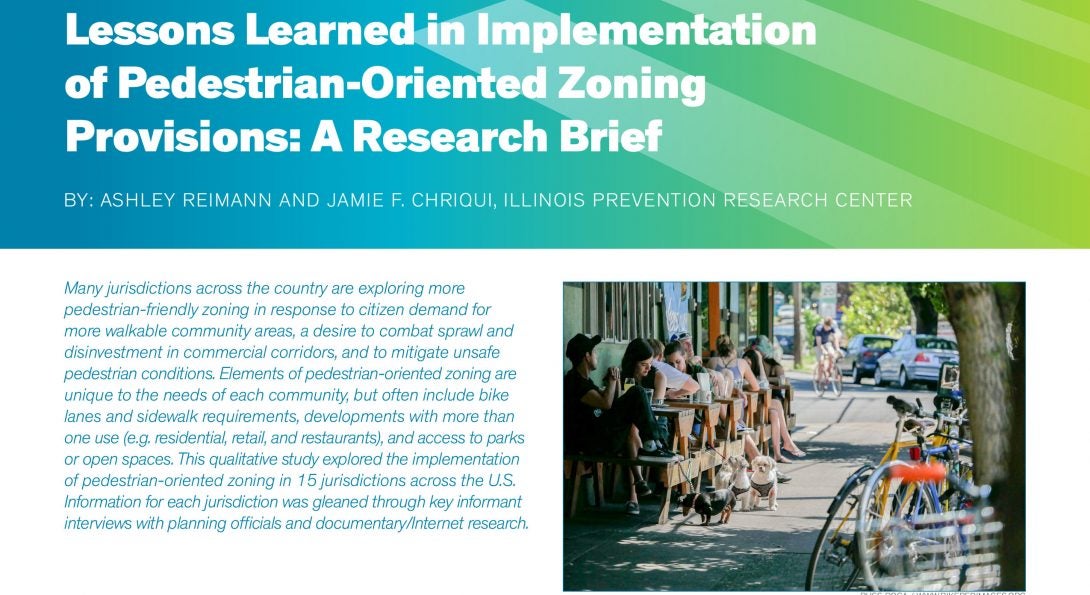Zoning for Walkability

Pedestrian-friendly zoning encourages and supports walkability through a variety of community-tailored approaches. Improvements to support walkability include large scale projects, such as the creation of mixed-use development, public plazas, and open-spaces in downtown centers, or more incremental approaches, including bike lanes, wider sidewalks, or the addition of street furniture and increased lighting.
Research Brief Heading link
This research brief summarizes findings from a qualitative exploratory study examining the implementation of pedestrian-oriented zoning in 15 jurisdictions across the U.S. Profiles were developed for 13 out of the 15 communities and are presented below.
Jurisdiction Profiles Heading link
| Blue Springs, Missouri | Greensboro, North Carolina | North Richland Hills, Texas |
| Bowie, Maryland | Gulf Shores, Alabama | Oakland Park, Florida |
| Dorchester County, South Carolina | Irving, Texas | Rock Hill, South Carolina |
| Dunwoody, Georgia | Lafayette, Louisiana | |
| Franklin, Tennessee | Miami, Florida |
Funding attribution Heading link

The Lessons Learned in Implementation of Pedestrian-Oriented Zoning Provisions research brief and associated profiles are products of the Physical Activity Policy Research Network Collaborating Center led by Dr. Jamie Chriqui and funded as a competitive supplement grant (SIP14-025) by the CDC to the Illinois PRC. The findings and conclusions in these works are those of the authors and do not necessarily represent the official position of the CDC.